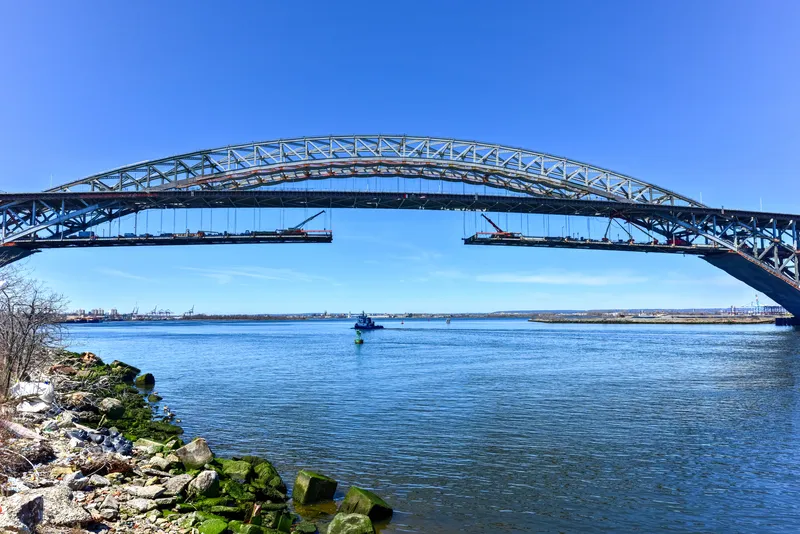Construction crews in the US state of Washington are finishing bicycle trails and pedestrian paths leading up to the award-winning SR 520 floating bridge. The Evergreen Point Floating Bridge - officially now the Governor Albert D. Rosellini Bridge - carries Washington State Route 520 across Lake Washington in Seattle. The 2.35km-long floating span is the longest floating bridge in the world and at 35m the world's widest. It opened in April last year as a replacement for the original 50-year-old four-lane
November 21, 2017
Read time: 2 mins
Construction crews in the US state of Washington are finishing bicycle trails and pedestrian paths leading up to the award-winning SR 520 floating bridge.
The Evergreen Point Floating Bridge - officially now the Governor Albert D. Rosellini Bridge - carries Washington State Route 520 across Lake Washington in Seattle. The 2.35km-long floating span is the longest floating bridge in the world and at 35m the world's widest.
It opened in April last year as a replacement for the original 50-year-old four-lane Evergreen Point Floating Bridge which was 40m shorter. The new US$751 million bridge has six lanes of traffic as well as a 4.26m-wide separate pedestrian and cycling path. Recent work includes trail railing and lighting, drainage systems and trail connections on land to enhance the safety and modality of the structure and connect it to a system of paths and trails in the surrounding area.
World Highways, in a key project report in 2014, reviewed construction of the toll bridge that floats on 77 concrete pontoons, compared to 33 for the original bridge. The longest pontoons are 109m and are 22.86m wide and 8.53m high. Among them are 21 of the heaviest, widest and deepest longitudinal pontoons ever built, each weighing nearly 10,000tonnes.
There are 54 supplemental pontoons allowing the structure to withstand winds of up to nearly 160kph and nearly 2m-high waves – estimated to occur in the Puget Sound area every 100 years.
The American Council of Engineering Companies (ACEC) recently bestowed the 2017 Grand Conceptor Award upon the bridge for being “the nation’s best overall engineering achievement”. The ACEC considered 162 projects from all over the world for the award. General engineering consultant on SR 520 project was HDR while Kiewit/General/Manson was the bridge’s design-builder. Lead design consultant was KPFF.
The Evergreen Point Floating Bridge - officially now the Governor Albert D. Rosellini Bridge - carries Washington State Route 520 across Lake Washington in Seattle. The 2.35km-long floating span is the longest floating bridge in the world and at 35m the world's widest.
It opened in April last year as a replacement for the original 50-year-old four-lane Evergreen Point Floating Bridge which was 40m shorter. The new US$751 million bridge has six lanes of traffic as well as a 4.26m-wide separate pedestrian and cycling path. Recent work includes trail railing and lighting, drainage systems and trail connections on land to enhance the safety and modality of the structure and connect it to a system of paths and trails in the surrounding area.
World Highways, in a key project report in 2014, reviewed construction of the toll bridge that floats on 77 concrete pontoons, compared to 33 for the original bridge. The longest pontoons are 109m and are 22.86m wide and 8.53m high. Among them are 21 of the heaviest, widest and deepest longitudinal pontoons ever built, each weighing nearly 10,000tonnes.
There are 54 supplemental pontoons allowing the structure to withstand winds of up to nearly 160kph and nearly 2m-high waves – estimated to occur in the Puget Sound area every 100 years.
The American Council of Engineering Companies (ACEC) recently bestowed the 2017 Grand Conceptor Award upon the bridge for being “the nation’s best overall engineering achievement”. The ACEC considered 162 projects from all over the world for the award. General engineering consultant on SR 520 project was HDR while Kiewit/General/Manson was the bridge’s design-builder. Lead design consultant was KPFF.







